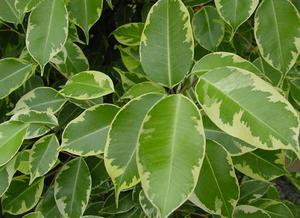 Various varieties of ficuses are very loved and popular among flower growers. They have long settled in apartments, greenhouses, offices, shops. Having planted such a plant on your windowsill and properly caring for it, you can admire the green handsome man for many years. True, many varieties of ficuses are gigantic in size, so they require a spacious room. But there are a lot of varieties of ficuses, and everyone can choose a plant for their apartment or office by size, color or leaf shape.
Various varieties of ficuses are very loved and popular among flower growers. They have long settled in apartments, greenhouses, offices, shops. Having planted such a plant on your windowsill and properly caring for it, you can admire the green handsome man for many years. True, many varieties of ficuses are gigantic in size, so they require a spacious room. But there are a lot of varieties of ficuses, and everyone can choose a plant for their apartment or office by size, color or leaf shape.
Content
Ficus: types, photos and names
Beautiful evergreen ficus belongs to the mulberry family... Plants growing naturally in New Guinea, Southeast Asia and the Solomon Islands can be both trees and shrubs. Depending on the type, ficus can have green or bicolored leaves up to 70 cm in size. Small flowers of the plant are located on simplified perianths.
In nature, ficuses can grow up to 40 meters long, and their trunk diameter can reach 5 meters. There are climbing and creeping plant species. In total, there are more than 1000 varieties of ficuses. However, much less is grown at home. We will consider ficuses known in amateur floriculture in our article today.
Popular types of ficuses
 Rubbery ficus is one of the most popular and unpretentious species of this genus of mulberry plants. He differs in a weakly branching trunk, which at home can reach two meters. Leathery and glossy elliptical leaves are slightly pointed at the tip. The greyish-green crown of the tree is rough and dotted with horizontal grooves. In humid rooms, the tree gives air roots. This type of ficus has different varieties, which mainly differ in the color of the leaves:
Rubbery ficus is one of the most popular and unpretentious species of this genus of mulberry plants. He differs in a weakly branching trunk, which at home can reach two meters. Leathery and glossy elliptical leaves are slightly pointed at the tip. The greyish-green crown of the tree is rough and dotted with horizontal grooves. In humid rooms, the tree gives air roots. This type of ficus has different varieties, which mainly differ in the color of the leaves:
- The Black Prince is a black-leaved plant.
- The Doecheri variety is distinguished by the presence of pink spots and a red vein in the middle of the leaf.
- Variety "Variegata" has beautiful green leaves with cream edging along the edges.
- The Robusta variety is a plant with large, glossy, deep green leaves.
Ficus Benjamin Is an evergreen tree with thin shoots in nature can grow up to 10-20 meters... At home, the bush reaches a height of three meters. The gray-beige branched crown of the plant has regular shapes. Oblong sheets reach 5-20 cm in length and 2-5 cm in width. They can be monochromatic or two-colored, oval, ovoid, or spiral-shaped. The crown of the tree is so dense that sometimes the trunk is not visible because of it. Thanks to the aerial roots growing from their shoots, you can make beautiful bindings and give the tree unusual shapes.
Creeping ficus is a miniature creeping shrub characterized by long stems on which additional roots are formed.On the green surface of its heart-shaped, rigid leaves, a reticulated pattern of yellow is formed. Thanks to its suction cups, the plant can grow on trees or supports.
Dwarf ficus or Pumila White represents a vine with long, creeping shoots. Asymmetric leaves are oval-heart-shaped and are located on stems 5 cm thick. The rough and wrinkled surface of the leaves is covered with a mesh pattern. The plant completely covers the soil with a carpet, growing to the ground with its numerous roots.
Lyre ficus is distinguished by large leaves of a light green hue. In young plants, they are covered with wax, and in shape resemble the silhouette of a violin. Each leaf reaches 60 cm in length and 30 cm in width. Green leaves with a white speck in the middle have a pronounced vein. The erect trunk of a plant in nature grows up to 12 m.
Ficus Rubiginoza or rusty is a small spreading tree with red shoots. Aerial roots form in the lower part of the crown, and bright pink pubescent buds grow at the top of the tree. Quite large leaves of the plant are dark green on top, and reddish brown on the underside.
Ficus varifolia got its name due to the fact that on its branches you can see leaves of completely different shapes. The shrub growing up to one meter has a tree-like stem and leathery leaves. Their dark green background may have brown spots. The shrub bears fruit reminiscent of olives, which should in no case be eaten.
Ficus Melani is considered a sacred tree in Indonesia. The young plant has an underdeveloped crown. The trunk of the plant is covered with leathery, elliptical dark green leaves and aerial roots reaching the ground. At home, the plant does not bloom, but forms syconium fruits.
Ficus Karika or indoor fig Is a small deciduous shrub with a spreading crown. It is distinguished by a brown-gray thick trunk and irregularly shaped toothed leaves. Each leaf is covered with light yellow or white veins. With proper home care, you can achieve flowering and fruiting of figs. The flowers of the plant are barely noticeable, but the fruits or wine berries resemble spherical compound fruits. In autumn, this type of ficus can shed its leaves.
How to care for ficus at home?
Indoor plants are unpretentious, therefore they are very popular and loved by flower growers. Caring for ficus at home is good lighting, regular and correct watering and a suitable temperature. However, there are still some nuances of growing, especially some plant species.
Lighting
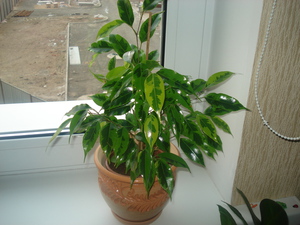 The best option for placing ficuses is a well-lit place. no direct sunlight... A small plant can be placed on the western or eastern windowsill, and a tall bush or tree can be placed on the floor or stand near the window. It is not recommended to push the plant deeper into the room. In the shade, the bush will slow down growth and shed its leaves.
The best option for placing ficuses is a well-lit place. no direct sunlight... A small plant can be placed on the western or eastern windowsill, and a tall bush or tree can be placed on the floor or stand near the window. It is not recommended to push the plant deeper into the room. In the shade, the bush will slow down growth and shed its leaves.
In a warm period, ficuses can be taken out onto a loggia or balcony, positioning them so that direct sunlight does not fall on the plant. In winter, light-loving plants suffer from short daylight hours, so it is recommended to additionally highlight them for several hours a day.
Temperature regime and air humidity
In summer, the optimal temperature for growing ficus can be in the range of 25-30C... In winter, the plant is recommended to be kept at an air temperature of 16-20C.
Ficuses do well at room temperature. The only thing they don't like is dry air emanating from heating radiators. Therefore, it is recommended to spray the plant with water at room temperature two to three times a day. Otherwise, dry air can cause damage to the tree by pests or diseases.
Watering and water procedures
 When caring for ficus, regular watering is required, which depends on the humidity of the air and the temperature in the room. The plant is watered only after the top layer of the earthen mixture dries well. Watering too often can lead to decay of the root system... It is also necessary to ensure that no water accumulates in the pan.
When caring for ficus, regular watering is required, which depends on the humidity of the air and the temperature in the room. The plant is watered only after the top layer of the earthen mixture dries well. Watering too often can lead to decay of the root system... It is also necessary to ensure that no water accumulates in the pan.
In the dry period, it is recommended to bathe ficuses under the shower twice a month, covering the soil with a waterproof film. In the absence of a shower, the leaves of the plant can be periodically wiped, first with a dry and then with a wet cloth.
To make the leaves of the tree a rich green color, experienced florists wipe them with a special solution:
- in half a glass of water, two tablespoons of mayonnaise are diluted;
- a dry and clean cloth is moistened in the resulting solution;
- leaves are wiped until all dirt and dust are removed.
Ficus feeding
When caring for ficus at home, feeding is done only in the summer. It is recommended to use mineral and organic fertilizers alternately for this. Plants are fed every ten days.
In winter, when there is little light and heat, fertilizers are not applied... But for the well-being of the plant, you can feed it with tea leaves, burying a small amount of them in the ground.
Transplant and soil for ficuses
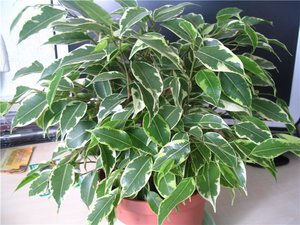 Young, actively growing plants need replanting every year. Old trees and bushes are replanted every few years. This should be done in order to renew the sour and settled soil.
Young, actively growing plants need replanting every year. Old trees and bushes are replanted every few years. This should be done in order to renew the sour and settled soil.
For transplantation, a neutral or slightly acidic special soil for ficuses sold in flower shops is suitable. Young plants need a specific earthen mixture that can cook from equal parts:
- peat;
- sand;
- leafy land.
Mature trees are transplanted into denser soil, so humus and turf soil are added to the mixture.
About a day before planting, the plants are watered. For young bushes, the new pots should be about 2 cm larger than the previous ones. At the bottom of the container, drainage is first poured, and only then a small layer of soil. A plant pulled from an old pot along with an earthen lump installed in a new container and sprinkled with soil.
Ficus Benjamin: home care, photo
A small tree with small leaves requires more attention and some care. Otherwise, leaves begin to fall off from it, and the plant becomes completely bald.
Ficus Benjamin in nature lives in conditions of high humidity, therefore it does not tolerate too bright lighting and dry air. Therefore, it is recommended to grow it away from direct sunlight, and spray it several times a day. A very good option for increasing humidity is to use a special humidifier.
If, nevertheless, the ficus Benjamin leaves began to fall, then the reason may be:
- Plant acclimatization to new growing conditions.
- Watering with cold water.
- Lack of light.
- Uncomfortable temperature for the plant (above 23C or below 17C).
- Drafts and sudden changes in temperature.
- Dry air.
- Excessive or insufficient soil moisture.
All these reasons when caring for Benjamin's ficus must be eliminated. The plant is placed in a bright place away from sunlight and draftsis regularly watered, sprayed and fed. Also, do not forget to periodically loosen the soil in the pot and transplant the young plant annually.
Reproduction of ficuses at home
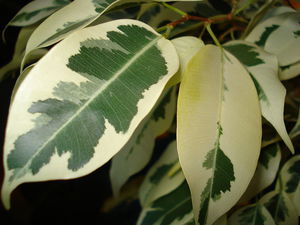 The simplest and most common way to propagate ficuses is by cuttings.
The simplest and most common way to propagate ficuses is by cuttings.
To obtain cuttings in the spring, shoots are cut from the bush under the lower node, on which there should be at least 2-3 leaves. The bottom leaf is removed, the cut is washed, and the cutting is placed in wet sand or water. The plant section is sprayed abundantly and covered with a transparent plastic bottle or another cap. In this form, the cuttings are placed in a warm, shaded place and ventilated daily. As soon as the plant gives roots and begins to grow, it can be safely planted in a pot filled with an earthen mixture.
As a cutting, you can take a large leaf of ficus, cutting it off along with the heel. The folded leaf is rooted in wet peat or sand. A support is installed next to it for stability. The leaf is sprayed and covered with a flask. During rooting, it is necessary to ventilate the cutting and moisten the peat. After the appearance of the roots, the sheet is planted in a small pot... As the plants grow, they are transplanted into large pots.
Real lovers of ficuses consider caring for a pet at home quite easy. Fulfilling just a few conditions, you can admire the beautiful greenery of a small bush or a magnificent and spectacular adult tree all year round.
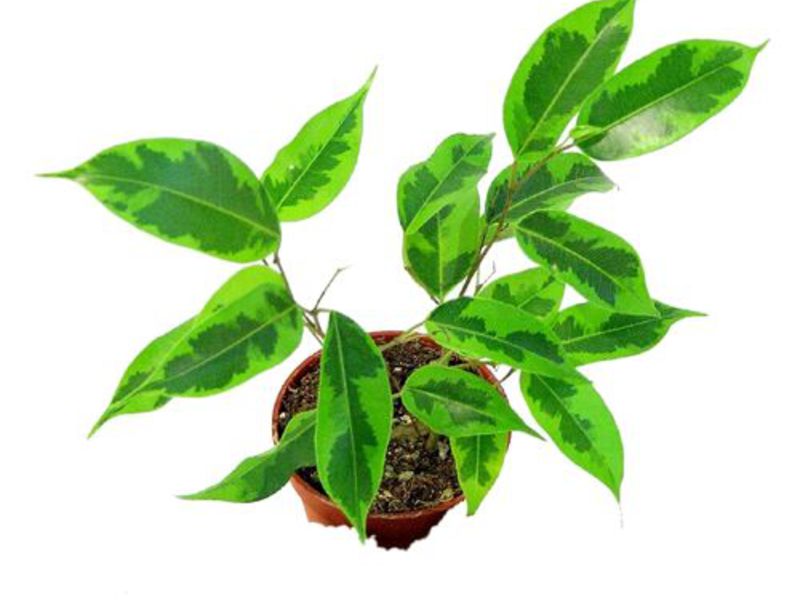
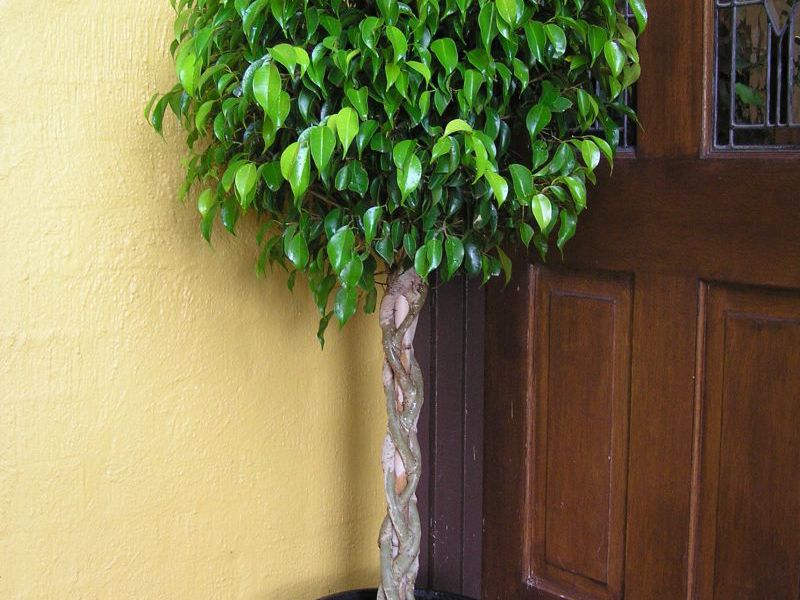

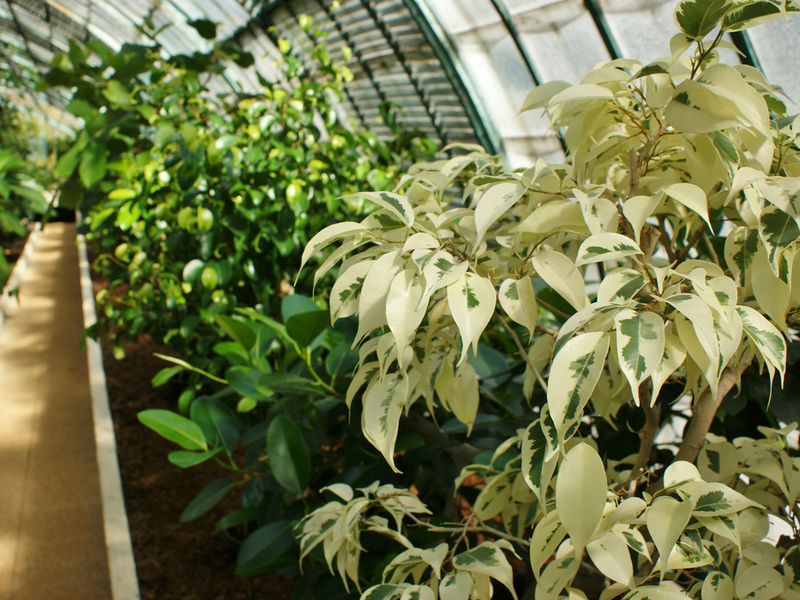
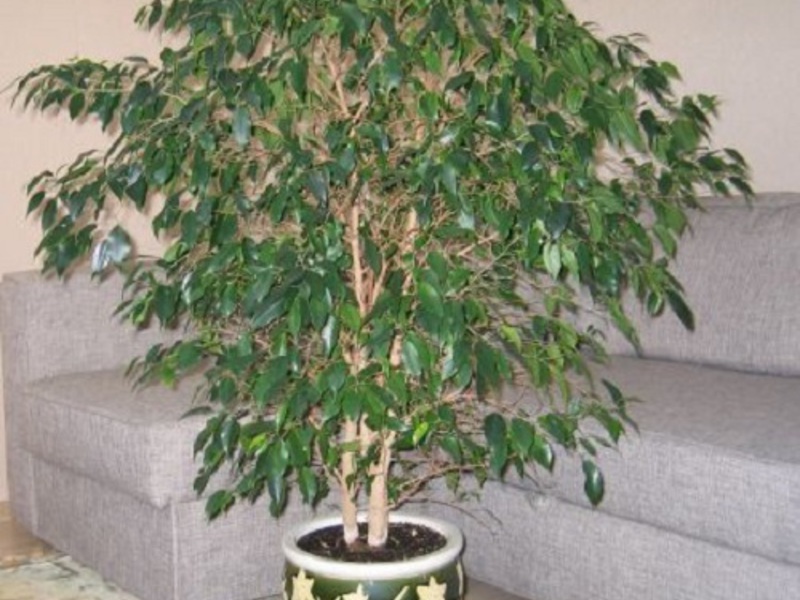
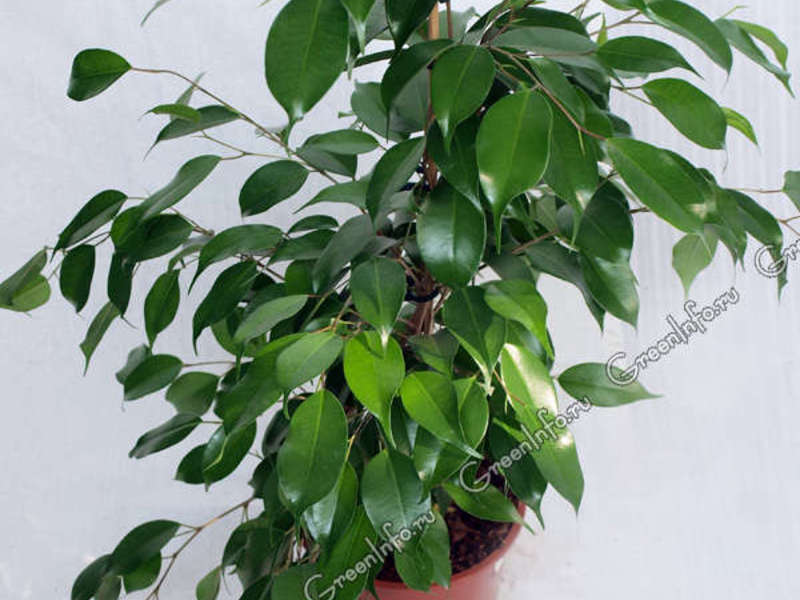
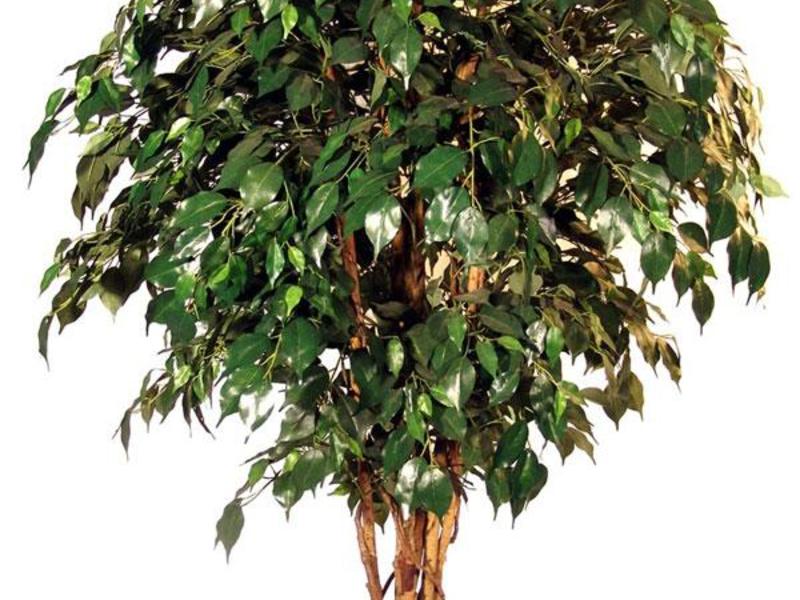

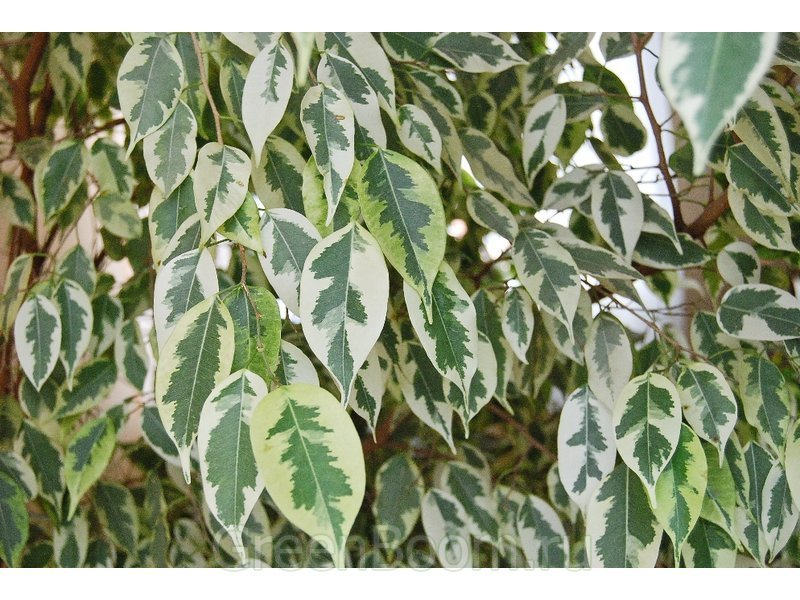

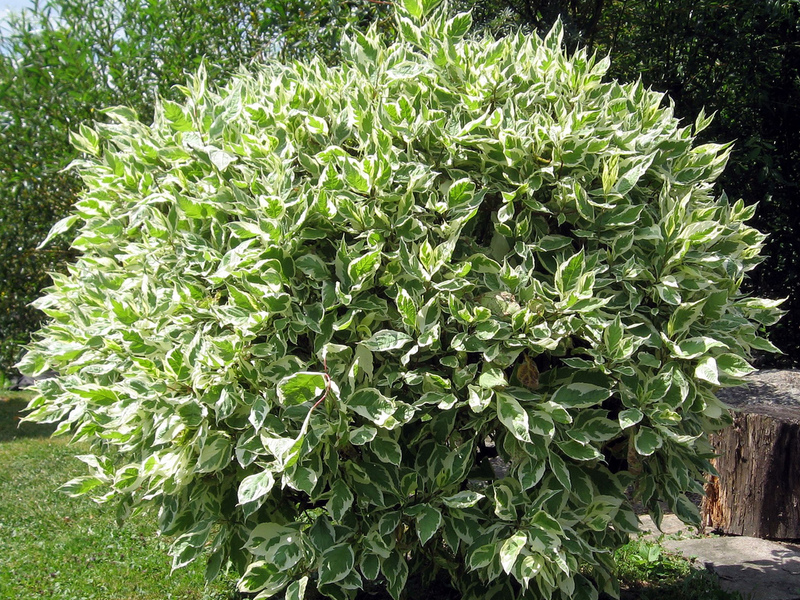

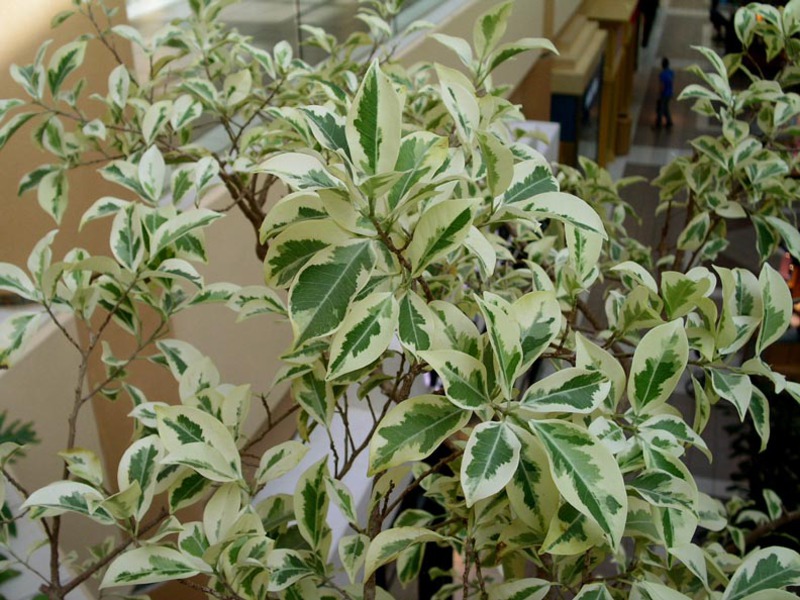



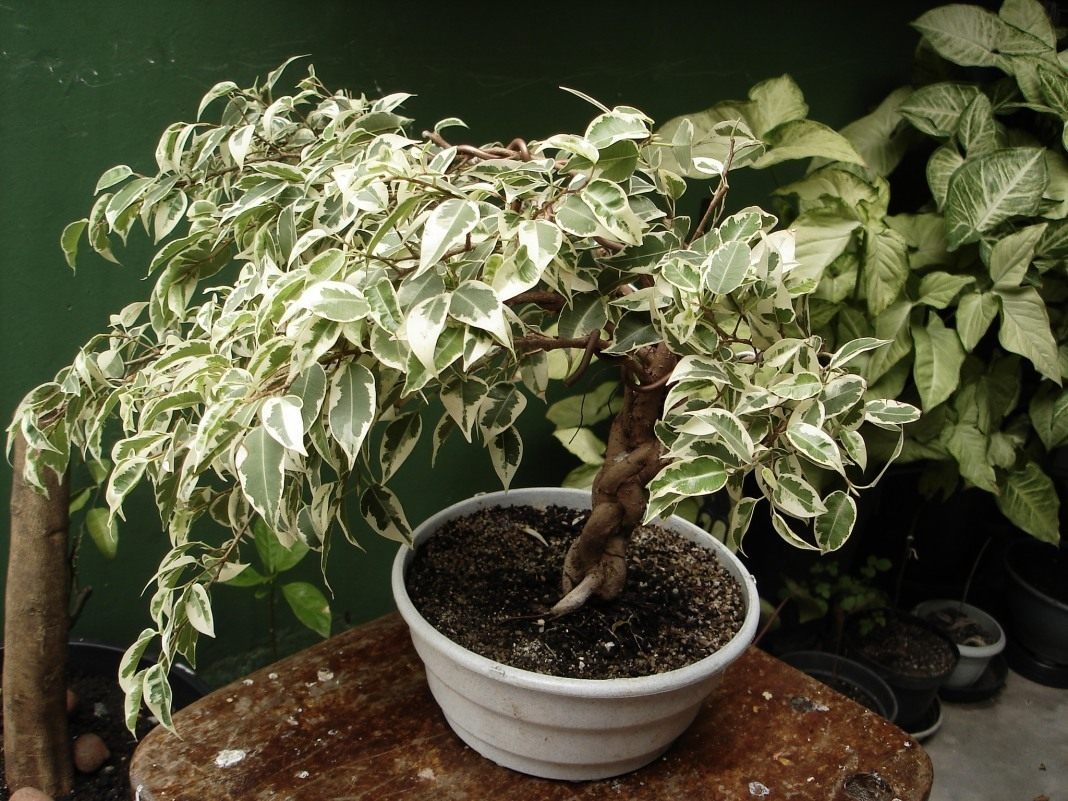
4 comments